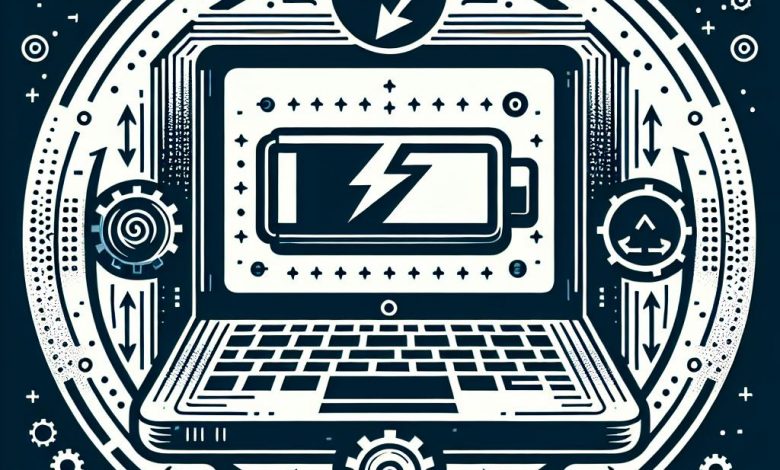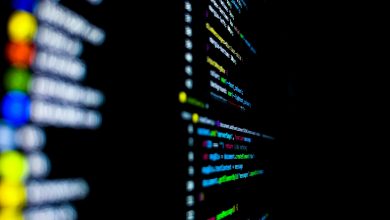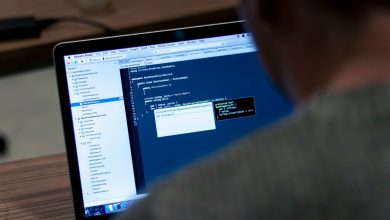
Table of Contents
Hard Resetting the Laptop
The first step in troubleshooting the issue of a Windows laptop turning off when unplugged - even with a new battery - is to perform a hard reset. This involves manually resetting the hardware settings of your laptop. Despite being a high-level reset, this process does not affect any personal data stored on your laptop.
Switch off the Laptop
To initiate the hard reset, you must first switch off the power of your laptop. Ensure that your Windows device is completely powered down before proceeding to the next step.
Disconnect the charger
Proceed to disconnect the charger from your laptop. This involves removing the power cord from the device – this action serves the dual purpose of ensuring your own safety, and allowing the computer to refresh its internal systems.
Unlock and Remove the Battery
Once the charger has been disconnected, proceed to remove the battery from the device. There should be a small battery lock that you can slide to enable removal. Removing the battery will ensure that no lingering power remains within your laptop.
Hold the Power Button to Force-Start
After removing the battery, hold the power button for at least 30 seconds. This allows the capacitors of the motherboard to be discharged, resetting memory chips that remained continuously active.
Re-Insert the Battery
Once the memory has been effectively reset, reinsert the battery into your laptop. Ensure it is properly seated and locked back into position before proceeding.
Plug in and Charge the Laptop
Having reinserted the battery, plug the charger back into your laptop and begin to charge the device. Test if your laptop can now function normally when unplugged. If this solution did not resolve the issue, consider moving on to more advanced troubleshooting methods.
Adjusting Power Options
Another solution to consider when your Windows laptop turns off when unplugged - even with a new battery - is adjusting the Power Options. This can correct potential issues caused by your operating system's Power Management settings.
Open Up Run Box and Type Code
To begin, press Win + R to open the Run dialog box. Into this, type the command ‘powercfg.cpl’. After entering the command, press Enter to open up the Power Options window.
Identify the Power Plan
On the Power Options window, identify the plan that is currently in use. Once you have identified the plan, click on 'Change plan settings' associated with it.
Proceed to 'Change Plan Settings'
Upon clicking 'Change plan settings', you will be directed to a new window. In this window, click on ‘Change advanced power settings’.
Navigate to 'Processor Power Management'
In the following dialog box, scroll through the menu until you find 'Processor power management'. Click on it to expand and reveal additional options.
Set 'On Battery' Mode to 25%
In the expanded Processor power management options, locate ‘Maximum processor state’. Set the 'On battery' mode to 25%. This means that your laptop will only use 25% of the processor’s capabilities when it is running on battery power.
Turn Off 'Enable Adaptive Brightness' in Display Section
Next, navigate to the ‘Display’ section in the same options menu. Expand it, then locate and select ‘Enable adaptive brightness’. Turn on adaptive brightness for both 'on-battery' and 'plugged in' options.
Click 'Apply' and Restart the Laptop
Once these changes have been made, click 'Apply' to confirm and save the new settings. You should then power off your system and try booting it up with the power cord unplugged to check if the issue persists.
Running the Power Troubleshooter
If the above methods fail to resolve the issue of your Windows laptop automatically shutting down when unplugged, the next step is to run the built-in Power Troubleshooter. This troubleshooter can identify and fix issues related to the system's power settings.
Open the Settings and Go to 'System'
Start the process by pressing the Winkey + I to open the Settings. From there, navigate to the 'Update and Security' or 'System' section, depending on your Windows version.
Navigate to 'Troubleshooter'
Once you're in the 'Update and Security' or 'System' section, move to the 'Troubleshoot' tab. In this section, you can access a list of troubleshooting tools that can help identify and fix various system errors.
Identify and Run the 'Power' Troubleshooter
Scroll through the list of troubleshooting tools until you find the 'Power' option under ‘Find and fix other problems'. Click on the 'Power' troubleshooter, then click on ‘Run troubleshooter' to initiate the troubleshooting process.
Follow the Troubleshooter Guidelines to Solve the Issue
The Power Troubleshooter will then begin scanning your system for any issues related to power settings that might be causing the automatic shutdown when unplugged. Be sure to follow the guidelines provided by the troubleshooter to solve the identified issues. After the troubleshooting is complete, restart your system to check if the problem has been resolved.
Updating or Uninstalling the Battery Driver
Another potential method for resolving this issue - when a laptop shuts off once unplugged - involves updating or reinstalling the battery's drivers. Faulty or outdated drivers may be the source of the problem.
Enter the Device Manager and Expand the 'Battery' Section
First, you'll need to access the Device Manager. You can do this by searching for it in the Start menu, or by pressing Win + R to open the Run dialog box and typing in 'devmgmt.msc'. Inside the Device Manager, find the 'Battery' section and expand it to view the numerous battery driver options.
Update the ACPI Compliant Control Method Battery Driver
Initially, try to update the driver. Locate the 'ACPI Compliant Control Method Battery' (or a similarly named) driver among the list. Right-click on it and select 'Update'. Your system will search for and apply any available updates.
If Unsuccessful, Uninstall the Battery Driver
If updating the driver doesn't yield positive results, you can instead uninstall the battery driver. Right-click again on the 'ACPI Compliant Control Method Battery' driver but this time, select 'Uninstall'. Confirm any prompts to uninstall the driver.
Restart the Laptop to Test the Changes
Once the driver has been updated or uninstalled, reboot your laptop. If you've chosen to uninstall the driver, it should be automatically reinstalled when your system restarts. After restarting, test to check if your laptop can now run fine when unplugged.




